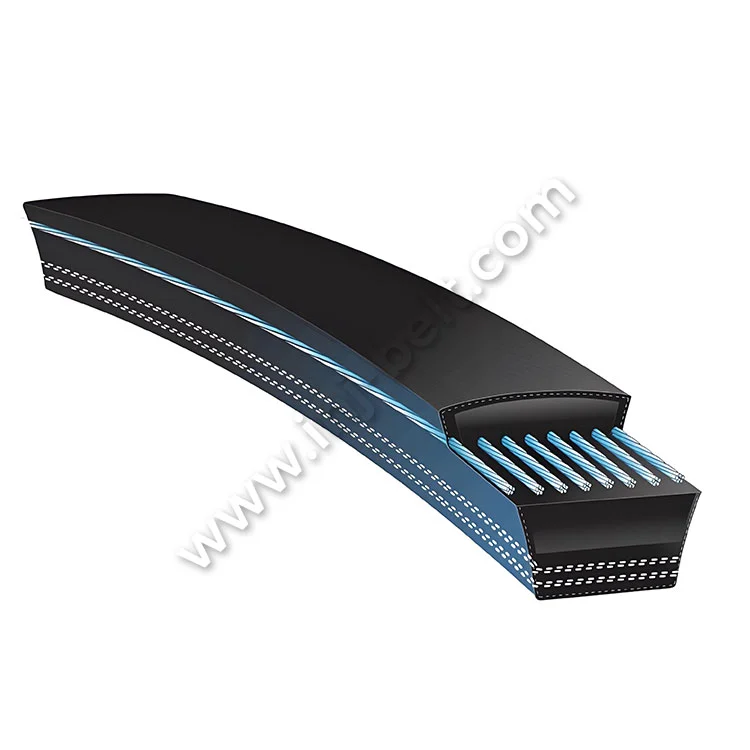What are the signs that a Rubber V Belt needs replacement?
2025-08-19
Importance of a Rubber V Belt
A Rubber V Belt is a vital component in many industrial machines, automotive engines, and agricultural equipment. It transfers power efficiently between pulleys, ensuring smooth operation and reducing energy loss. However, like any mechanical part, a Rubber V Belt has a limited service life and must be inspected regularly to avoid sudden failures. Knowing when to replace it is crucial for minimizing downtime and maintaining performance.
Common Warning Signs of Belt Failure
The most common signs that a Rubber V Belt requires replacement include visible wear, cracking on the belt surface, squealing noises during operation, slipping on pulleys, and a noticeable decrease in transmission efficiency. In addition, overheating of the machine and vibration in the system are strong indicators that the belt is no longer functioning as intended. Our factory emphasizes the importance of preventive maintenance and early detection to avoid unnecessary losses.
Advantages of LSL® Rubber V Belts
LSL® Rubber V Belts are engineered with durable materials that resist wear and high temperatures. Still, all belts eventually show signs of fatigue. Regular inspections allow operators to identify problems before they cause costly breakdowns. When examining the belt, one should check both the inside and outside edges. A hardened surface or loss of flexibility is a clear signal for replacement. Our experience shows that belts exposed to high loads or harsh conditions require more frequent replacement cycles than those in lighter applications.
Key Product Parameters
To help customers evaluate when a belt should be changed, we provide key product parameters of our Rubber V Belt. These parameters determine the performance, lifespan, and suitability for specific applications. Below is a detailed reference table that demonstrates the specifications of our belts.
| Parameter | Description |
| Material | High-quality rubber with polyester cord reinforcement |
| Temperature Resistance | -30°C to +80°C, suitable for diverse industrial environments |
| Tensile Strength | High tensile strength ensures durability and long service life |
| Flexibility | Excellent bending resistance for smooth pulley contact |
| Oil and Heat Resistance | Designed to withstand oil contamination and elevated temperatures |
| Standard Sizes | Available in multiple sections such as A, B, C, and D profiles |
| Application Range | Automotive, industrial machinery, and agricultural equipment |
Our table shows how the specifications of our product contribute to consistent reliability. Every belt produced in our factory undergoes strict quality control, ensuring uniform performance. Customers who select LSL® belts can rely on stable transmission efficiency even in challenging working conditions.
Operational Symptoms to Watch
When evaluating replacement needs, customers should also consider load capacity and noise levels during operation. A worn Rubber V Belt often creates unnecessary friction, which leads to a burning smell or loud squeaks. Our recommendation is to inspect belts at regular intervals, especially in equipment that operates continuously. Belts showing elongation or slipping are beyond their effective working condition. Using them longer may cause damage to pulleys and other connected components.
Impact of Misalignment
Another important factor is alignment. Even a high-quality LSL® Rubber V Belt can wear prematurely if pulleys are misaligned. Misalignment puts uneven stress on the belt, creating cracks or frayed edges. Our technicians often advise customers to replace belts immediately once such symptoms appear, as misalignment combined with an old belt can shorten the lifespan of the entire transmission system.
Frequently Asked Questions
Q1: What are the signs that a Rubber V Belt needs replacement?
The main signs include visible cracks, surface glazing, squealing noises, vibration, slipping, and reduced transmission power. Once these symptoms appear, the belt should be replaced to ensure safety and efficiency.
Q2: How often should a Rubber V Belt be inspected?
It is recommended to inspect the belt every three to six months depending on the intensity of operation. For heavy-duty industrial machines, more frequent checks are necessary. Our factory ensures that customers receive clear maintenance guidelines along with every shipment.
Q3: Can a damaged Rubber V Belt affect other machine parts?
Yes, a worn or slipping belt can damage pulleys, increase bearing loads, and even cause overheating in connected machinery. Replacing the belt promptly helps avoid unnecessary repair costs and prolongs the life of the entire system.
Commitment to Quality
The quality and reliability of a Rubber V Belt depend not only on its material but also on proper usage and maintenance. Our continuous investment in research and development ensures that each belt produced in our factory maintains superior resistance to wear, oil, and heat. Choosing LSL® products guarantees consistent transmission power and long service life, making them a reliable choice for industries worldwide. If you are looking for durable and efficient transmission solutions, our company is ready to support your needs. Contact Zhejiang INJ Transmission System Co., Ltd. today to learn more about our high-quality Rubber V Belt range and how we can assist your business with long-term performance and stability.



